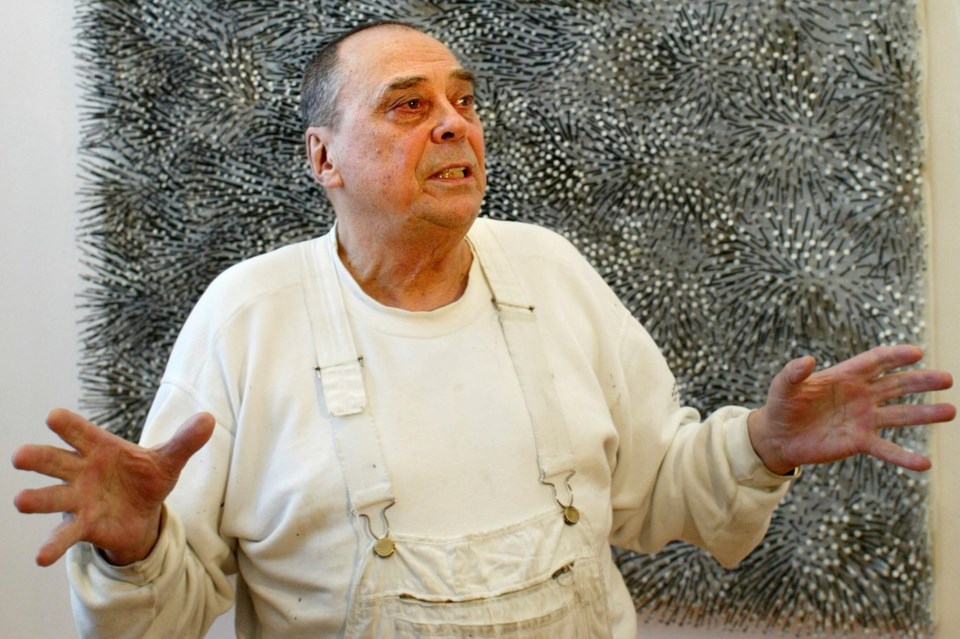BERLIN (AP) â German artist Günther Uecker, one of the country's most important post-war artists who was world-famous for his large-format nail reliefs, has died. He was 95.
German news agency dpa reported that his family confirmed he died at the university hospital in his hometown of Düsseldorf in western Germany Tuesday night. They did not give a cause of death.
For decades, Uecker, who was often dubbed âthe nail artist,â created art by hammering carpenterâs nails into chairs, pianos, sewing machines and canvases. His works can be found in museums and collections across the globe.
In his art work, seemingly endless numbers of nails, which would by themselves perhaps be perceived as potentially aggressive and hurtful, turned into harmonic, almost organic creations. His reliefs with the tightly hewn nails are reminiscent of waving grasses or fields of algae in a marine landscape.
Uecker himself described his nail art as diary-like landscapes of the soul, which he called an âexpression of the poetic power of man,â dpa reported.
Hendrik Wüst, the governor of North Rhine-Westphalia which includes state capital Düsseldorf, called Uecker âone of the most important and influential artists in German post-war historyâ and said that with his lifeâs work, he influenced generations of young artists and âcontributed to an open and dynamic society."
Born on March 13, 1930, in the village of Wendorf on the Baltic Sea, Uecker moved to Düsseldorf in the mid-1950s, where he studied and later also taught at the city's prestigious art academy.
In one of his most spectacular appearances or art happenings, he rode on the back of a camel through the hallways of the venerable academy in 1978. Together with fellow artist he âoccupiedâ the Kunsthalle Baden-Baden museum in 1968, with both kissing in front of the cameras.
The son of a farmer, he traveled the world with a humanitarian message of peace and exhibited in countless countries, including dictatorships and totalitarian states. He painted ash pictures after the in Ukraine in 1986, and exhibited human rights messages painted on fabric in Beijing.
He also painted âVerletzungswörter,â or words of violence, killing and torment in many languages and foreign scripts on large canvases. In 2023, Uecker erected a stone memorial in Weimar in memory of the victims of the Nazi concentration camp Buchenwald.
âThe theme of my artistic work is the vulnerability of man by man,â he said.
Kirsten Grieshaber, The Associated Press



